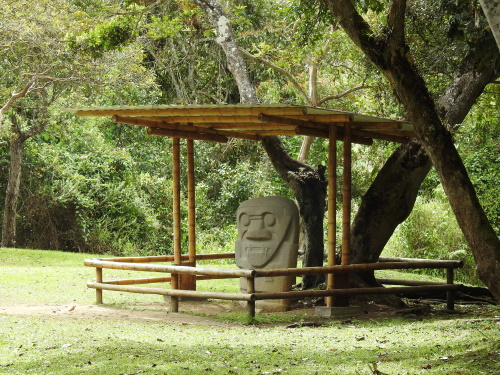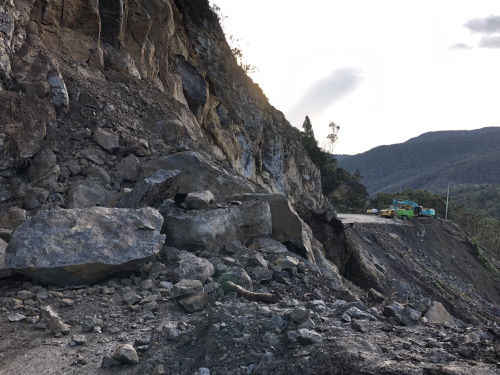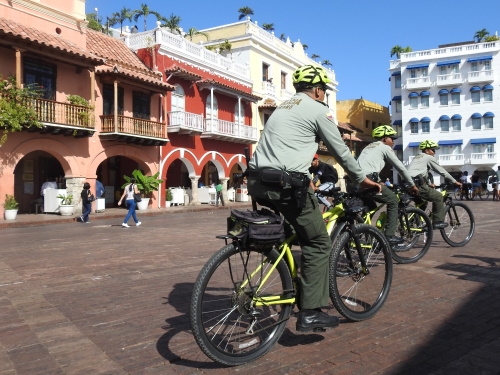Blog Countries
Tips for travelling to Colombia
In late December and January I spent 3 weeks travelling across (parts of) Colombia by public transport. I covered 5 WHS, 5 TWHS and some places of interest in between. I found a country that often reminded me of what Cuba could have looked like without having taken the communist path. Find below my top tips for travelling to Colombia as a World Heritage Traveller.
1. Only 5 out of the 9 WHS are fairly accessible
Colombia to date has gained 9 WHS, of which only 5 can be viewed as "accessible" (and even of those Mompox and Tierradentro require some off the beaten track travel). Qhapaq Nan as a serial transnational site may easily be picked up in another country, but the locations in Colombia are in a remote zone near the Ecuadorian border. Chiribiquete NP is closed to all visitors - I may have counted the fly-over tour if I had been lucky enough to secure a spot, but all spaces were filled when I inquired 3 months before. Malpelo seems to be only accessible by liveaboard dive trips and has so far only been visited by Don Parrish, a.k.a. the most travelled person on the planet. Los Katios finally is closed to general tourists as well, although one or two people have peeked (and sneaked?) in from the adjoining river.
2. Be prepared for logistical mishaps
Especially when travelling by public transport, add a spare day or two to your itinerary because logistics will not go 100% according to plan. On my first transfer within the country - a domestic flight from Bogota to Popayan - we ended up at Cali airport instead. Which meant finding your own transport for the final 3 hours late at night. My trials about reaching Tierradentro I have already described in that site's review. Transport is slow in general, on average only 30-40 km an hour is possible. On the plus side, there are many (mini)buses and shared taxi's available - much more than you would gather from web searches. People are also always willing to help out, so chances that you will be stranded anywhere are slim.
3. Don't focus on the big cities
The big cities were probably what I liked least of Colombia. Beforehand you may try to shape your itinerary around Bogotá, Cali, Medellin and Cartagena. I somewhat enjoyed Bogotá, it undoubtedly has the best museums in the country including the unmissable Gold Museum. The historical center of this old city (founded in 1538) however has been fully demolished as a result of the various spells of Civil War. Cali I did not like so much, it probably suffers the most from homeless people and crime. Medellin I did not visit and Cartagena is a story in itself. The bigger cities in general are less safe and less well-preserved than other parts of the country.
4. You can do some old-fashioned, hardcore backpacking here
Like that feeling of taking public buses by standing by the roadside and raising your hand? Of being given the choice between a 3,000 or 5,000 peso (0.80 or 1.35 EUR) potato for your salchipapas? Or discovering an 8 EUR private room with own bathroom + perfectly fine wifi next to the ruins of Tierradentro? Especially the triangular area between Popayan, San Agustin and Tierradentro is well-suited for this travel style. You'll also meet few other foreign travellers in this region, so you can nurture that explorer feeling.
5. "Don't mention the war"
As a casual tourist, it is hard to make sense of the current security situation in Colombia. Locals tend not to talk openly about the past decades and there are no visible reminders. Its recent make-over from dangerous narcostate has at least turned out well superficially: the country feels totally safe and friendly (I found its people generally warm-hearted, polite and helpful - not only to tourists but also to each other). Under the radar though, a lot of things still are wrong (Bogotá's elite lives far away from the poor countryside which is lacking decent infrastructure) and the situation can take a turn for worse quickly. The cities have a huge police presence, I think there was some kind of security person on every street corner in Bogotá. Military police also have checkpoints at strategic roads around the country and I even met them fully armed on the way to the overly popular Valle de Cocora with its wax palm trees.
Els - 16 February 2020


